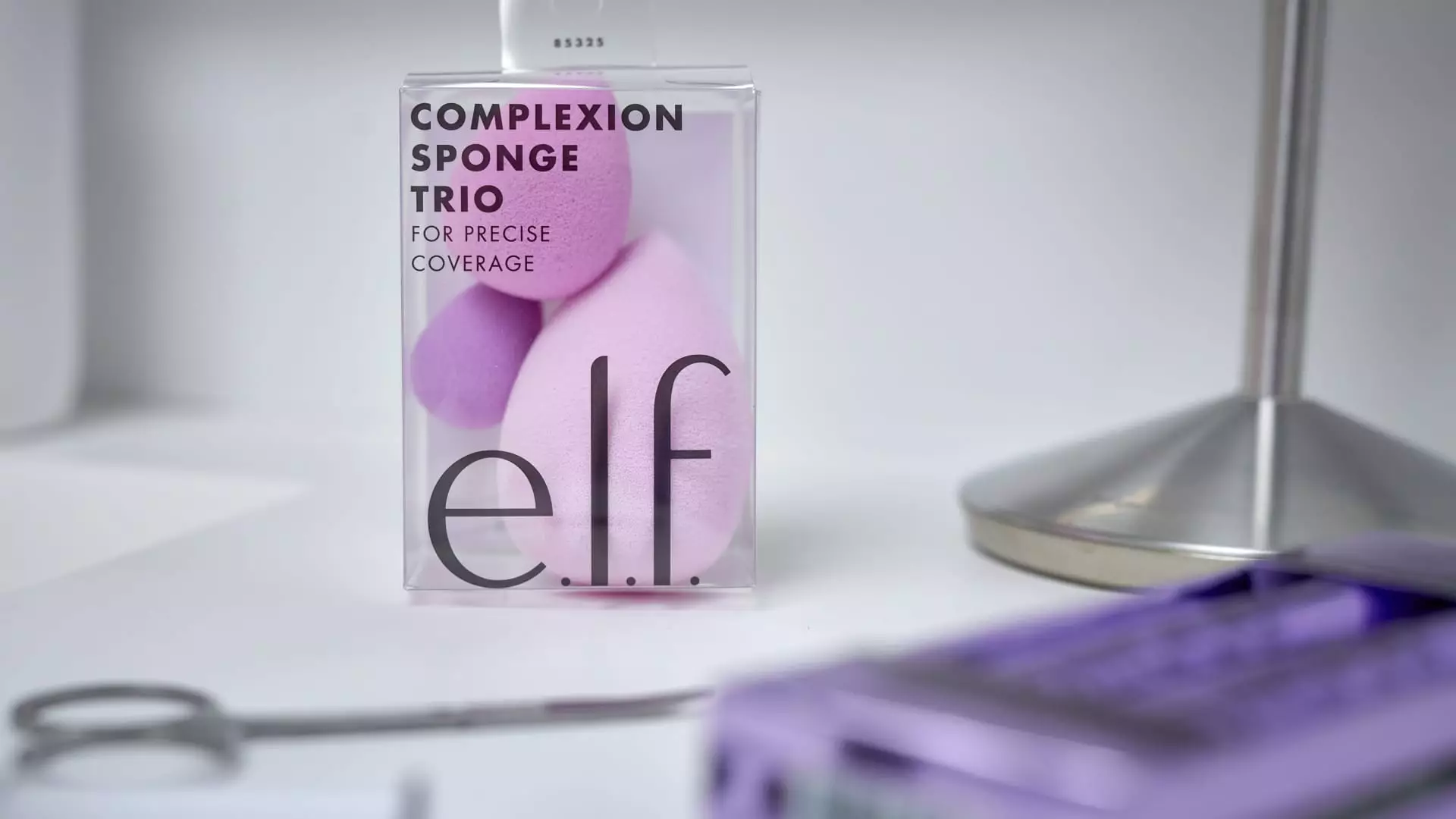E.l.f. Beauty, renowned for its innovative approach and appealing price points, has recently encountered a significant setback. The beauty retailer announced a substantial 36% drop in profits in its latest financial report and lowered its full-year sales guidance. This decline marks an unusual downturn for a brand that had been celebrated for its rapid growth and strategic marketing successes. The company initially posted holiday sales that surpassed expectations. However, the disappointing profit figures have sent shockwaves through the financial markets, leading to a staggering 20% drop in E.l.f. shares during after-hours trading.
The financial results reveal a more complex picture than the headline figures suggest. E.l.f.’s adjusted earnings per share of 74 cents narrowly fell short of analyst expectations of 75 cents, while revenues hit $355 million, exceeding predictions of $330 million. Nevertheless, the optics of missing profit estimates, which the company has achieved with relative consistency in the past, has shaken investor confidence. E.l.f.’s net income plunged to $17.3 million, a stark contrast to the $26.9 million reported during the same period a year prior, prompting questions about the sustainability of its previous growth trajectory.
Revised Forecasts and Market Reaction
In light of the recent performance, E.l.f. has had to adjust its full-year sales projections. The new guidance estimates sales of $1.3 to $1.31 billion, significantly lower than the initial forecast of $1.32 to $1.34 billion. Analysts had anticipated higher numbers, calculating estimates of $1.34 billion. This adjustment undoubtedly adds pressure not only on E.l.f. but also reveals a broader trend within the beauty industry, where growth is increasingly challenging.
Furthermore, E.l.f.’s forecast for adjusted earnings per share has also been revised downward, with new predictions ranging between $3.27 and $3.32 compared to previous estimates of $3.47 to $3.53. The company’s projections for the current quarter suggest additional struggles, with estimates suggesting earnings could fall between 66 and 71 cents per share — significantly lower than the average anticipation of 97 cents. These numbers reflect a cautious outlook and underline a fundamental shift in E.l.f.’s growth narrative.
E.l.f. Beauty’s CEO, Tarang Amin, responded to the financial downturn by pointing towards an overarching slowdown in the beauty market rather than attributing the challenges solely to internal company issues. He identified two main factors hindering sales: the adverse impact of holiday discounting and a decline in social engagement surrounding beauty products. Amin emphasized that sales in the mass cosmetics sector fell by 5% in January, which he argues resulted from externalities like the Los Angeles wildfires and uncertainty around social media platforms, particularly TikTok.
This commentary highlights the increasing role of social media as an essential driver for beauty sales and the vulnerability of brands like E.l.f. to shifts in online engagement. As the company relies heavily on online conversation to propel product visibility, a downturn in ‘social commentary’ can cripple sales momentum. Amin’s insights underline the necessity for beauty brands to adapt quickly to changing communication climates, ensuring effective marketing strategies remain in place.
Moreover, external factors such as tariffs pose added pressure. Amin noted that a large segment of E.l.f.’s supply chain operates within China, raising concerns about potential price increases driven by new tariffs. The recent 10% tariff, while seemingly manageable, may still necessitate price adjustments that could impact the company’s competitiveness in the market.
Despite current challenges, E.l.f. remains committed to advancing its brand. Amin pointed out that the company intends to leverage its profits to invest strategically in inventory management, infrastructure improvements, and international expansion. These initiatives signal a proactive approach to navigating the tumultuous market conditions.
Though the rapid growth E.l.f. enjoyed several years ago may be slowing, the brand still holds ground in the larger beauty market. E.l.f.’s ability to create high-quality, affordable alternatives (or “dupes”) of more expensive products has cultivated a dedicated consumer base that appreciates the brand’s innovative offerings. The company’s prioritization of prudent financial guidance instills some confidence moving forward, as it continues to navigate a challenging landscape.
E.l.f. Beauty’s recent adjustments illuminate the complexities of the beauty industry, including the volatility of consumer preferences and market conditions. While the brand faces significant hurdles, its foundational strategies and investments may well demonstrate resilience amid adversity, suggesting a future characterized not solely by current difficulties but potential recovery and renewed growth.

